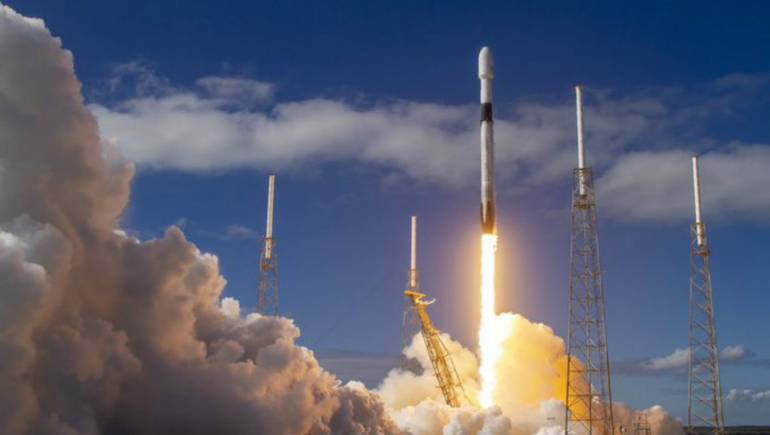
NEW DELHI: Within days of sending two NASA astronauts to ISS (International Space Station) on Falcon 9 rocket, SpaceX has now launched 60 new internet satellites into orbit using another Falcon 9. This was confirmed by the company on Twitter.
This was the eighth batch since May 2019 and takes the current count of Starlink constellation of satellites to 482. The previous launch that took place in April also carried 60 satellites.
The company intends to launch 12,000 internet satellites into the lower orbit to provide reliable high speed broadband internet on Earth through space. This will boost internet access in areas where coverage through on-ground mobile tower is difficult.
According to reports, one of the satellites launched this time has a visor system that has been put to block the sun from reflecting off of its communication antenna surfaces.
This visor system is part of a test to see if it can reduce sunlight reflected off the satellite back to Earth. Based on its effectiveness, the visor system will be made a standard component in all Starlink satellites that are to be launched in future.
Low flying satellites have large, flat antennas that can reflect sunlight, causing extremely bright flash of light visible on earth. In fact many of these satellites are even visible from earth’s surface at night without any telescopic equipment.
Starlink satellites weigh up to 260kg and orbit at an altitude of 550km from earth. Since they are placed in a lower orbit they have a small coverage area compared to communication satellites that operate in medium earth orbit between 2,000 km and 35,000 km or the larger satellites in geosynchronous orbit, which are placed above 35,000 km.
This is why SpaceX needs a large network of satellites.
What gives Starlink an edge over medium and geosynchronous satellites is it’s proximity to earth. Internet signals send through the latter suffer from issues like latency and interference. SpaceX claims Starlink will reduce latencies to 25 milliseconds.
The company plans to offer satellite internet services to most of the world sometime in 2021.
source: livemint





